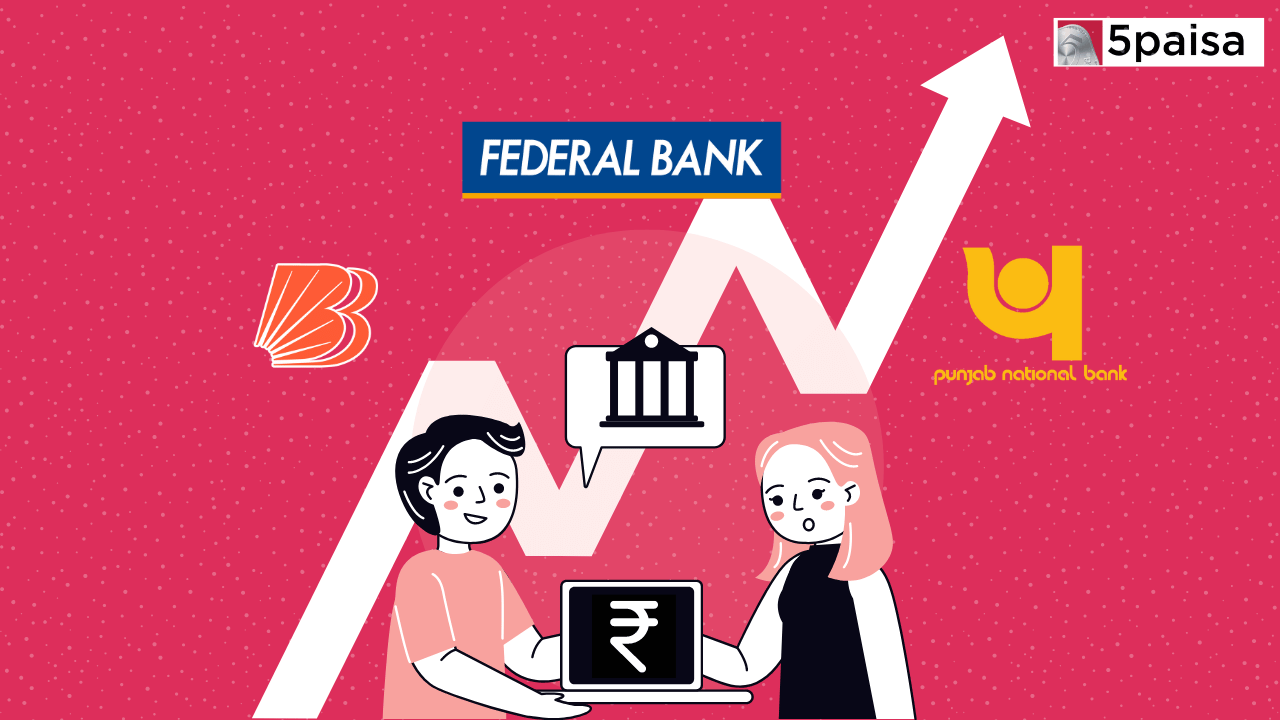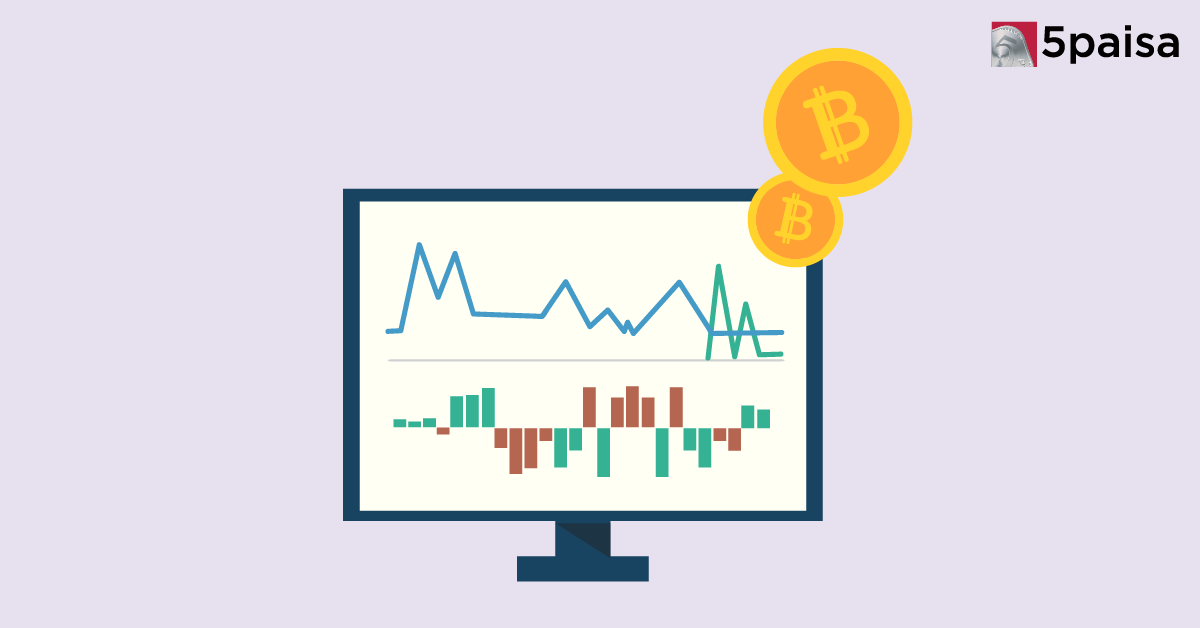Intraday in Stocks vs 24x7 Crypto Trading: Which Actually Works for Retail Investors?
Best Undervalued Bank Stocks

Top private banks in India are like pillars of strength, propelling the nation's financial landscape forward with their unwavering commitment to excellence. Over the years, India's banking industry has undergone substantial expansion and change, and private banks have been essential in advancing this development. These organizations have played a significant role in revolutionizing the banking industry, producing cutting-edge goods and services, and supplying tailored financial solutions to their clients. As we venture into the realm of banking prowess, we uncover the crème de la crème of the industry, the champions who have set the benchmark for exceptional service, innovation, and customer satisfaction. In this article, we dive deep into the dynamic world of the top private banks in India 2023, where financial ingenuity meets unparalleled expertise. Join us on this exhilarating journey as we explore the top banks in India that have redefined the banking experience and continue to shape the economic growth of the nation.
What are Private-sector Banks?
Private sector banks are those financial institutions that are operated by private corporations or individuals. The top private banks in India operate with the primary objective of making profits by providing various banking and financial services to individuals, businesses, and organizations. Unlike public-sector banks, which are owned and controlled by the government, private-sector banks are owned by private shareholders.
The top private banks in India offer a wide range of banking services, including deposit accounts (such as savings accounts, current accounts, and fixed deposits), loans (such as personal loans, home loans, and business loans), credit cards, investment services, wealth management, foreign exchange services, and more. They compete in the market by providing efficient customer service, innovative products, and competitive interest rates to attract customers and generate profits.
The top private banks in India play a vital role in driving economic growth by facilitating capital formation, providing financial intermediation, and supporting the development of various sectors. The Indian banking industry’s focus on profit-making allows them to allocate resources efficiently and respond quickly to market dynamics.
Before investment in banks, it’s important to note that while private-sector banks are privately owned, they still operate within a regulatory framework and are subject to supervision and oversight by the relevant banking authorities to ensure stability, transparency, and fair practices in the banking sector. Let's take a look at the best private banks in India 2023.
Methodology for undervalued best bank shares 2023
The Companies with Price to Earnings ratios less than 15x.
The overview of the best undervalued banking Stocks to invest.
1. Bank of Baroda
Personal banking, corporate banking, international banking, small and medium business (SME) banking, rural banking, non-resident Indian (NRI) services, and treasury services are just a few of the services offered by Bank of Baroda.
Key Operational Highlights:
- Loan Portfolio Expansion: Bank of Baroda demonstrated robust growth in its global advances, marked by domestic advances expanding by 17% and international advances by 23%. Retail advances spearheaded the growth, escalating by 25%, while agri and MSME advances increased by 15% and 13% respectively.
- Deposit Growth: The bank reported a 16% increase in total deposits, driven by a substantial 24% growth in term deposits. While CASA deposits exhibited a comparatively lower growth rate, the bank's focus remains on expanding the term deposit base.
- Financial Performance Metrics: Noteworthy financial performance metrics include a 10 basis points rise in the yield on advances, along with a 4.7% cost of deposits. Net Interest Income (NII) surged by 35% YoY, operating profit climbed by 73%, Profit Before Tax (PBT) rose by 106%, and Profit After Tax (PAT) recorded an 88% increase.
- NPA Management: The bank exhibited a favorable reduction in its Gross Non-Performing Assets (NPAs) to 3.51% and Net NPAs to 0.78%. The Provision Coverage Ratio (PCR), which includes TWO (Technical Write-Off) advances, is now at an impressive 93.23%.
- Strategic Focus: Bank of Baroda's strategy for the future centers on significant growth in its retail loan portfolio, coupled with maintaining a Net Interest Margin (NIM) of 3.3% for the upcoming fiscal year. The bank aims for an overall loan growth of 14-15%, with specific emphasis on corporate growth (12-13%) and retail growth (18-20%).
Financial Performance:
- Loan and Deposit Growth: The bank's global advances exhibited a robust trajectory, backed by strong domestic and international advances growth. Term deposits and retail advances notably contributed to the deposit and loan portfolio expansion, respectively.
- Income Growth: The bank's NII experienced substantial growth, accompanied by impressive increments in operating profit, PBT, and PAT. This comprehensive growth indicates the bank's effective balance between lending and income generation.
- NPA Management: Notable improvements in asset quality were observed, with both Gross NPA and Net NPA witnessing reduction. The bank's focus on proactive provisioning and asset recovery mechanisms contributed to this favorable trend.
- Capitalization and Risk Management: Bank of Baroda's robust capitalization, as indicated by CET1 ratio of 11.94% and CRAR of 15.84%, bodes well for its risk management and sustainable growth endeavors.
- Fee Income Growth: The bank's strategic focus on augmenting fee-based income sources underscores its emphasis on diversifying revenue streams and optimizing resource allocation.
Key Risks:
- Recovery Challenges: The bank reported a reduction in recovery during the current quarter compared to the previous one, although it expects minimal net recovery for the full year. Fluctuations in recovery rates could impact asset quality.
- Exposure Management: While the bank has not received specific guidelines from RBI regarding exposure reduction in certain states, it must vigilantly manage its exposure to regions with potential economic volatility or sectoral risks.
- Fraud and Penalties: The bank has provisions for fraud accounts and has faced penalties from the RBI. Continued vigilance and proactive measures are essential to mitigate risks associated with fraudulent activities.
- Interest Rate Sensitivity: The bank's net interest margin (NIM) may be influenced by fluctuations in the cost of deposits, necessitating effective strategies to balance lending rates and funding costs.
- Divestment and Asset Sales: The bank's ongoing efforts in divesting assets like BOB Financial Solutions and Nainital Bank should be managed meticulously to ensure optimal returns and minimal impact on overall operations.
Outlook:
- Growth Trajectory: Bank of Baroda's robust loan portfolio growth, especially in the retail segment, is expected to sustain, driven by decentralized processing centres and project approvals, aligning with the bank's growth-focused strategy.
- NIM Management: The bank's efforts to maintain a NIM of around 3.3% despite potential fluctuations in the cost of deposits demonstrate its commitment to optimizing interest income and funding costs.
- Risk Management: The bank's favourable credit outlook, bolstered by a positive quarter-on-quarter growth and strong asset quality metrics, positions it well to navigate potential risks and uncertainties in the financial landscape.
- Fee-Based Income: The bank's emphasis on fee-based income sources, including Cash Management Business (CMS) and wealth management, should contribute to sustained revenue diversification.
- Capital Strength: Bank of Baroda's well-capitalized position and focus on strengthening its balance sheet underscore its preparedness to absorb unforeseen shocks and capitalize on growth opportunities.
| Bank's Key Ratios | As of Q1-FY23 |
| P/E (x) | 7.94 |
| P/E (x) | 1.11 |
| ROE (%) | 20.03 |
| NIM (%) | 3.27 |
| GNPA Ratio (%) | 3.51 |
| NNPA Ratio (%) | 0.78 |
| Capital Adequacy Ratio(%) | 15.84 |
| Domestic CASA(%) | 40.33% |
| PCR (%) | 78.52 |
Bank of Baroda Share Price
2. Federal Bank
Travancore Federal Bank Limited, or "the Bank," was formed as The Federal Bank Limited in 1931. Retail and corporate banking, Para banking services like debit cards, third-party product distribution, etc., as well as treasury and foreign exchange operations are all offered.
Key Operational Highlights:
- Strong Business Growth: The Federal Bank Limited achieved a significant milestone by crossing INR 4 lakh crores in total business. In Q1 of FY24, all business segments recorded sequential growth of approximately 5%, reflecting a robust momentum.
- Aligned with Business Plans: Q1 results of the bank are in line with their established business plans and guidance. This demonstrates effective execution of strategies and a solid understanding of market dynamics.
- Sustainable Growth Momentum: The bank anticipates sustained growth momentum and margin expansion for the fiscal year 2024, underlining their commitment to long-term sustainable growth.
- Focus on Credit Growth and Quality: The bank is well-positioned to leverage credit growth opportunities while emphasizing better-rated segments. The worst impact of the rate war on liability side is believed to be behind the bank.
- Fee Income Strategy: The bank is confident in continuing the momentum on the fee side, particularly in card processing. Their goal is to increase fee income as a share of assets closer to 1%, demonstrating their focus on diversifying revenue streams.
Financial Performance:
- Sequential Growth: Q1 results showcased a robust sequential growth across all businesses, contributing to the bank's overall financial performance.
- Credit Quality and Costs: The bank expects credit quality to be stable, with credit costs projected around 40 basis points plus or minus. This demonstrates prudent risk management practices.
- Margin Expansion: The bank anticipates margin expansion in the second quarter and sustained Return on Assets (ROA) expansion, highlighting their emphasis on optimizing profitability.
- Lending Rates and NPAs: The bank experienced higher retail Non-Performing Assets (NPAs) in secured home or LAP segments. Despite a rise in lending rates, competitive pressures and risk focus impacted the pass-through of these rate changes.
- Segment Diversification: The bank adheres to a well-defined strategy by ensuring no segment constitutes more than 15% of the bank's portfolio. This diversification strategy contributes to risk mitigation and balanced growth.https://www.5paisa.com/stock-market-guide/generic/non-performing-assets
Key Risks:
- Credit Quality Uncertainty: While the bank is confident in its credit quality and cost projections, uncertainties in the economic environment can impact asset quality and credit risk.
- Market Competition: Competitive pressures affecting lending rates and pass-through might impact the bank's margins and revenue generation.
- Interest Rate Volatility: Fluctuations in interest rates can influence the bank's net interest margin (NIM) and profitability.
- Economic and Regulatory Risks: Changes in economic conditions and regulatory environment can affect business operations, credit quality, and overall financial performance.
- Concentration Risk: Despite the bank's diversified approach, any concentration of risk in specific segments or regions might pose challenges.
Outlook:
- Margin and NIM Expansion: The bank projects margin expansion in the second quarter and aims for sustained NIM improvement throughout the fiscal year, targeting a full-year NIM of around 330.
- Cost of Deposits and ROA: Anticipating a trend down in the cost of deposits for Q2, the bank remains committed to sustained ROA expansion, emphasizing continued profitability enhancement.
- Business Growth and Strategy: The bank foresees yield and advances expansion through mixed changes and volume growth at higher pricing. A comprehensive and diversified business strategy contributes to sustained growth momentum.
- Operational Efficiency: The bank's single-digit to early double-digit opex growth projection underscores their focus on maintaining operational efficiency, even as they navigate variable business-related factors.
- Risk Management and Profitability: With emphasis on better-rated segments, diversified business portfolio, and prudent risk management, the bank seeks to strike a balance between profitability and risk mitigation.
| Bank's Key Ratios | As of Q1-FY23 |
| P/E (x) | 9.22 |
| P/E (x) | 1.3 |
| ROE (%) | 15.73 |
| NIM (%) | 3.15 |
| GNPA Ratio (%) | 2.38 |
| NNPA Ratio (%) | 0.69 |
| Capital Adequacy Ratio(%) | 14.28 |
| Domestic CASA(%) | 31.85 |
| PCR (%) | 70.02 |
Federal Bank Share Price
Punjab National Bank
The first Swadeshi bank in India is Punjab National Bank. The Government of India owns PNB, a bank that offers banking and financial services, and it is based in New Delhi. It is India's third-largest PSU after IOB.
Key Operational Highlights:
- Robust Q4 Performance: Punjab National Bank (PNB) showcased a strong performance in Q4 FY22-23, marked by increased profitability, reduced Non-Performing Assets (NPAs), and improved operating profit and net interest margin (NIM).
- Business Growth: The bank's gross business expanded by 12.14% to reach Rs. 21.65 lakh crore, with a notable increase of 11.77% in gross deposits, totalling Rs. 12.81 lakh crore.
- Net Interest Income: PNB achieved robust net interest income growth of 30.05% YoY, reaching Rs. 9,499 crore for the quarter ended March 2023, reflecting effective interest management.
- Guidance for FY24: The bank provided guidance for the upcoming financial year, aiming for credit growth of 12-13%, deposit growth of 10-11%, and a net interest margin of 2.9-3%.
- Asset Quality Improvement: PNB exhibited improved asset quality, with significant reductions in both gross and net NPAs. The bank's proactive measures led to a notable decrease in NPAs.
Financial Performance:
- Profitability Boost: The bank's Q4 performance translated into increased profitability, with enhanced net interest income, improved operating profit, and higher net interest margin. These metrics reflect the bank's effective management of its interest and operational activities.
- Business Expansion: PNB's impressive business growth, as evidenced by the substantial increase in gross business and deposits, underscores its market presence and customer base expansion.
- Asset Quality Enhancement: The bank's concerted efforts to reduce NPAs resulted in a substantial decline in both gross and net NPAs, indicating improved credit quality and enhanced risk management practices.
- Guidance and Strategy: The bank's strategic guidance for FY24 highlights its balanced approach to growth, deposit acquisition, and margin management. This provides insights into PNB's prudent planning and execution strategies.
- Digital Transformation: PNB's focus on strengthening its digital presence and cross-selling opportunities within its customer base indicates its commitment to leveraging technology for operational efficiency and customer satisfaction.
Key Risks:
- Asset Quality Uncertainties: While the bank has shown progress in reducing NPAs, the asset quality remains subject to macroeconomic factors and borrower servicing capabilities, especially given the residual vulnerable book and restructuring challenges.
- Elevated Credit Cost: PNB's proactive provisioning and prudent risk management practices are reflected in elevated credit costs, which might impact profitability in the short term despite improved asset quality.
- External Economic Environment: Economic conditions and regulatory changes can influence PNB's asset quality, growth trajectory, and profitability, underscoring the importance of adaptability and risk mitigation.
- Transition to ECL Framework: The bank's preparation for the expected credit loss (ECL) framework transition indicates its readiness for potential impacts on capital positions and financial reporting due to regulatory changes.
- Competition and Market Dynamics: PNB's focus on increasing its CASA share and digital offerings might be influenced by competitive pressures and changing customer preferences.
Outlook:
- Continued Profitability: PNB's strong business growth, improved asset quality, and strategic guidance suggest a positive outlook for sustained profitability, subject to effective risk management and prudent provisioning.
- Asset Quality Improvement: The bank's commitment to further reduce gross and net NPAs highlights its focus on enhancing asset quality, potentially contributing to improved creditworthiness.
- Strategic Focus: PNB's emphasis on strengthening its digital presence, expanding CASA share, and leveraging subsidiaries for profitability bodes well for its strategic growth and operational efficiency.
- Guided Growth: The bank's guidance for credit and deposit growth, along with margin expansion, demonstrates its proactive approach to capitalizing on growth opportunities while maintaining financial stability.
- Risk Management: PNB's focus on risk management, asset quality, and capital adequacy aligns with its commitment to maintaining a stable financial position and credit strength.
| Bank's Key Ratios | As of Q1-FY23 |
| P/E (x) | 14.6 |
| P/E (x) | 0.24 |
| ROE (%) | 3.34 |
| NIM (%) | 3.06 |
| GNPA Ratio (%) | 8.74 |
| NNPA Ratio (%) | 2.72 |
| Capital Adequacy Ratio(%) | 15.5 |
| Domestic CASA(%) | 15.5 |
| PCR (%) | 86.9 |
Punjab National Bank Share Price
Conclusion
The banking sector is essential to how the economy operates. For all investors wanting to invest in it, the sector's rise is a gift. Given its great performance during the previous two years, the banking sector—or the financial sector as a whole—is an industry where the prospects of a favourable return are relatively high.
The future looks better for banks as a result of rising interest rates, stricter rules, and low-yielding goods. It is now one of the best performers in the market due to the cyclical nature of this business and a growing economy.
- Flat ₹20 Brokerage
- Next-gen Trading
- Advance Charting
- Actionable Ideas
Trending on 5paisa
Indian Stock Market Related Articles
Disclaimer: Investment in securities market are subject to market risks, read all the related documents carefully before investing. For detailed disclaimer please Click here.

 Sachin Gupta
Sachin Gupta
 5paisa Research Team
5paisa Research Team
 Tanushree Jaiswal
Tanushree Jaiswal




